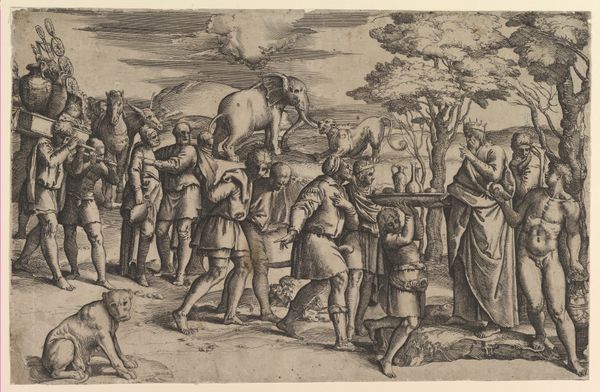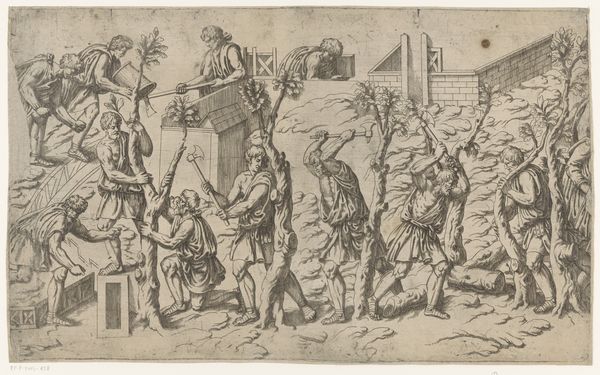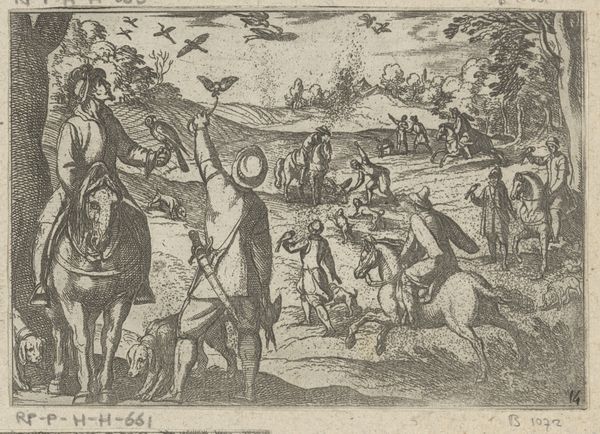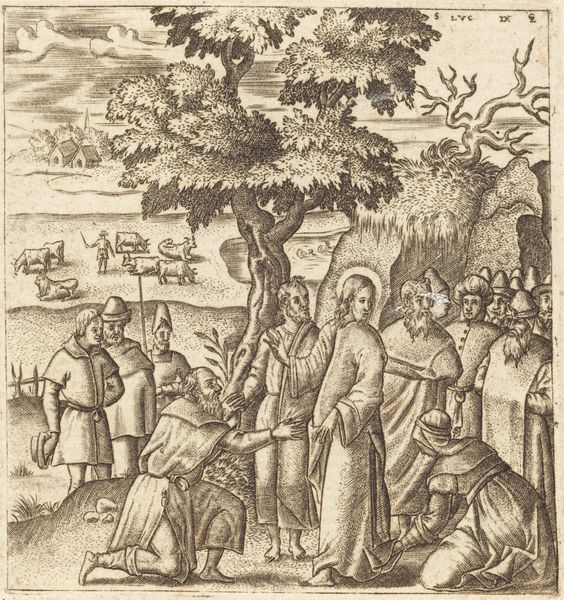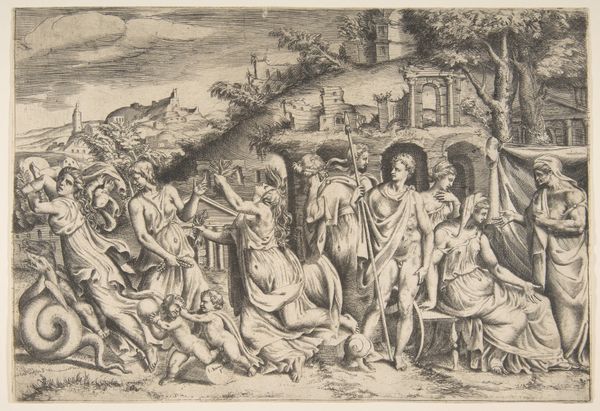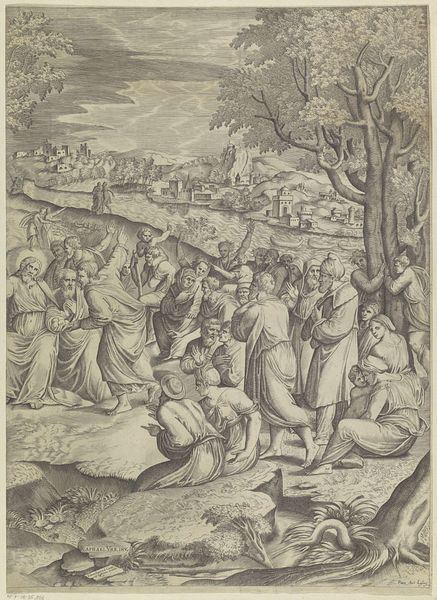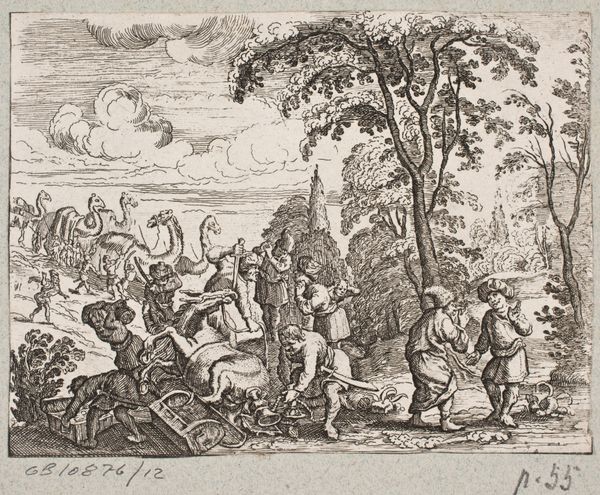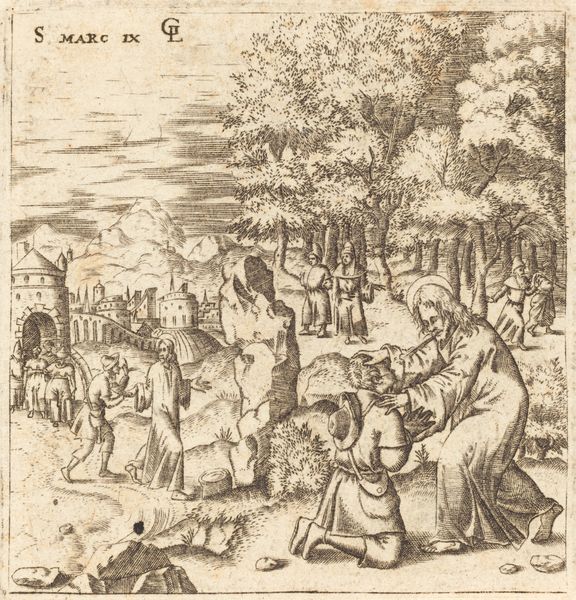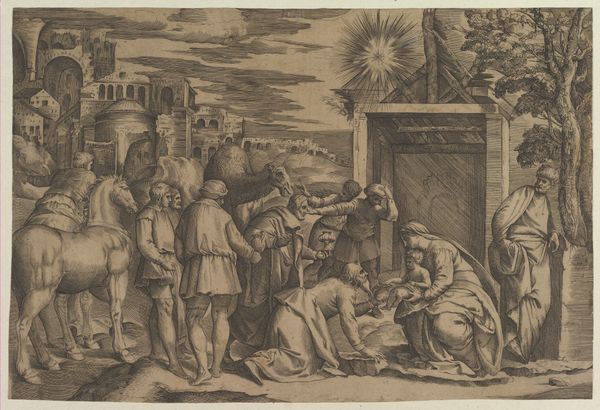
Aaron and Nadab Taking Leave of Elisheba (?), with the Israelites Camped before Mount Sinai and Moses Ascending the Mountain. 1580 - 1641
0:00
0:00
drawing, print, ink
#
drawing
#
narrative-art
# print
#
pencil sketch
#
landscape
#
charcoal drawing
#
figuration
#
ink
#
pencil drawing
#
history-painting
#
academic-art
Dimensions: sheet: 3 7/16 x 4 1/8 in. (8.8 x 10.5 cm)
Copyright: Public Domain
Editor: This is "Aaron and Nadab Taking Leave of Elisheba (?), with the Israelites Camped before Mount Sinai and Moses Ascending the Mountain," a pen and ink drawing by Adam van Noort, dating from 1580 to 1641. The camp scene is so detailed! What significance might that scene have had for its contemporary audience? Curator: Considering the period, history paintings like these held considerable social and political weight. Think about the power structures: the church, the state, wealthy patrons. This wasn't just storytelling; it was about reinforcing moral and social order. How do you think the depiction of Moses ascending Mount Sinai would resonate with viewers back then? Editor: I imagine it reinforced religious authority and perhaps the importance of divine law in civic life. The people seem very still and ordered in their tents. Curator: Exactly. It subtly speaks to societal expectations. Now, notice the drawing’s provenance: How do you think the fact that this work is held in the Metropolitan Museum of Art shapes its current interpretation? Editor: I suppose being in a prestigious museum like the Met gives it an added layer of cultural importance. It transforms a personal narrative into a piece of national heritage. Curator: Precisely! The museum as an institution influences what we consider art and what narratives we preserve. So it’s crucial to examine whose stories get told, and how these spaces influence our understanding. Editor: I never thought about it that way before – how a museum shapes an artwork's significance beyond its aesthetic qualities. It becomes part of a bigger cultural conversation. Curator: Precisely. The image, the museum, the narrative - they are all entwined. It offers a compelling insight into how art and institutions shape cultural values.
Comments
No comments
Be the first to comment and join the conversation on the ultimate creative platform.
